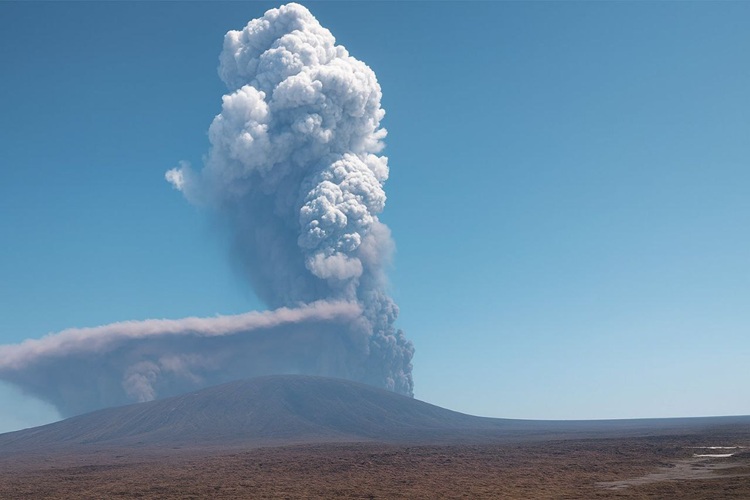The India Meteorological Department (IMD) has confirmed that ash clouds originating from the eruption of Ethiopia’s Hayli Gubbi are moving away from Indian airspace, with the skies expected to clear by around 7.30 pm IST on Tuesday.
On Monday, this volcanic eruption disrupted several flight operations across India after ash plumes passed over the Arabian Sea and affected parts of western and northern regions.
IMD Director-General Mrutyunjay Mohapatra stated that strong upper-level winds carried the ash from the Afar region of Ethiopia eastwards across Yemen, Oman and the Arabian Sea towards India, and that the plume is now drifting in the direction of China.
According to IMD forecast models, states including Gujarat, Delhi-NCR, Rajasthan, Punjab and Haryana were under ash-influenced skies on Tuesday.
In response, aviation advisories were issued, and airlines were encouraged to reroute or reschedule flights, especially those traversing the ash-affected altitudes and air-corridors.
Operating under guidance from the Toulouse Volcanic Ash Advisory Centre (VAAC), Indian airlines made proactive adjustments to flight paths and fuel planning to ensure safety.
The eruption of Hayli Gubbi — which erupted for the first time in recorded history after lying dormant for around 12,000 years — spewed ash columns up to about 14 km (roughly 8.7 miles) into the atmosphere.
The remote volcano is located in Ethiopia’s Afar region, on the edge of the Erta Ale volcanic range.
ALSO READ: Assam govt distributes Tewary Commission Report on 1983 Nellie Massacre in Assembly
While the IMD emphasised that the ash cloud’s main impact in India was on aviation rather than ground-level air quality, residents in Delhi did observe a dense haze on Monday.
The city’s morning air-quality index (AQI) reached 360, with one locality reporting 416, placing it firmly in the ‘very poor’ to ‘severe’ category.
Minimum temperatures dipped to around 9 °C, approximately two degrees below normal, as the maximum hovered near 27 °C with pockets of mist and moderate fog.
Continuous satellite monitoring and coordination with aviation authorities remain in place, but IMD officials are confident that by evening the ash influence over India will have largely dissipated.















